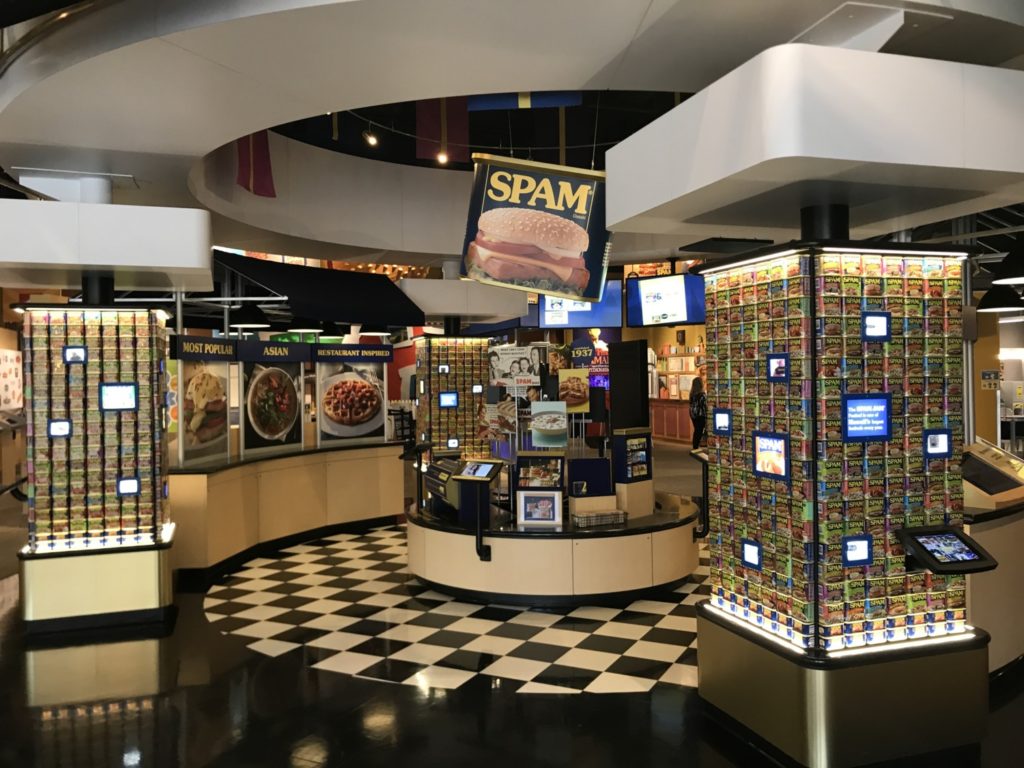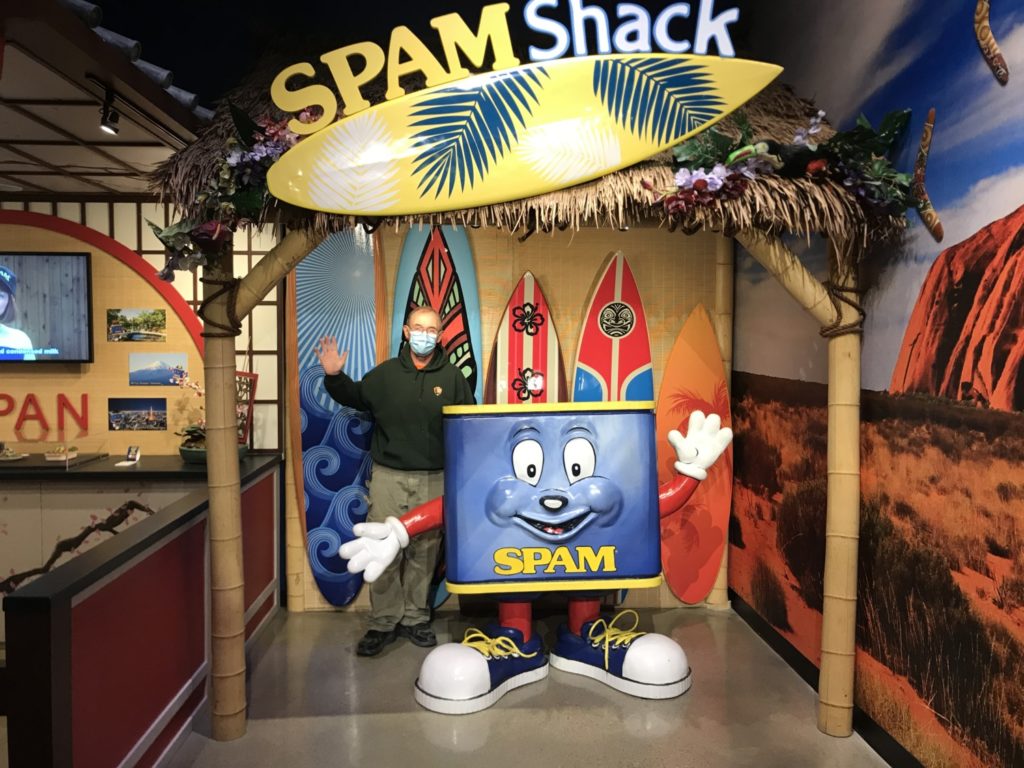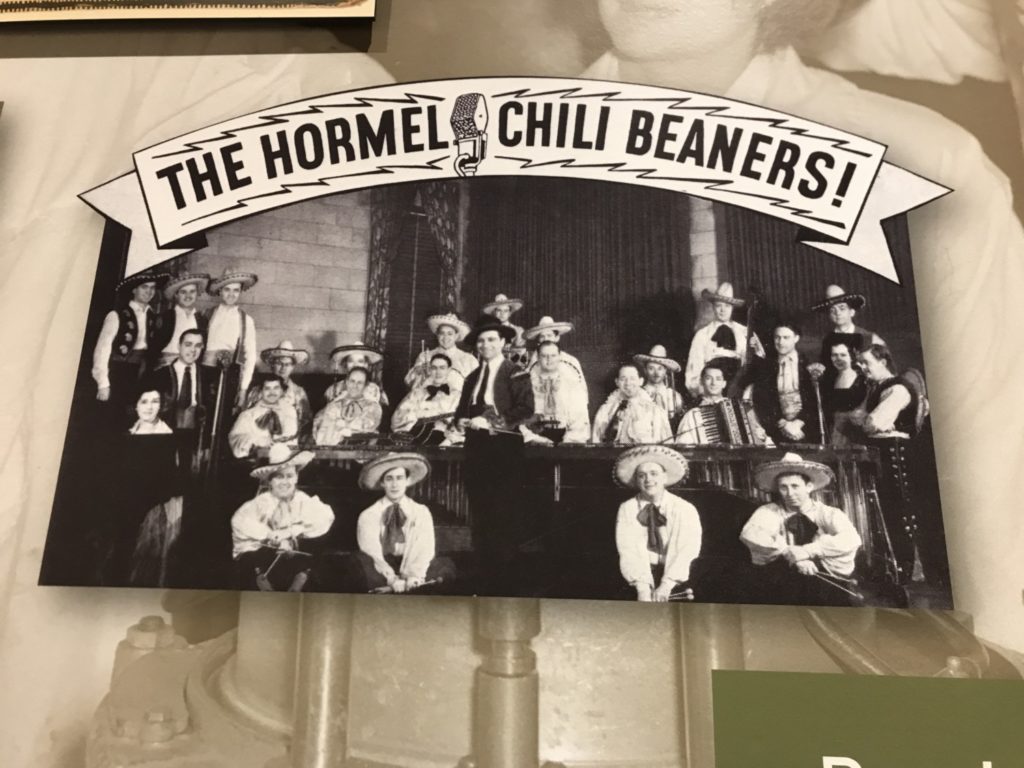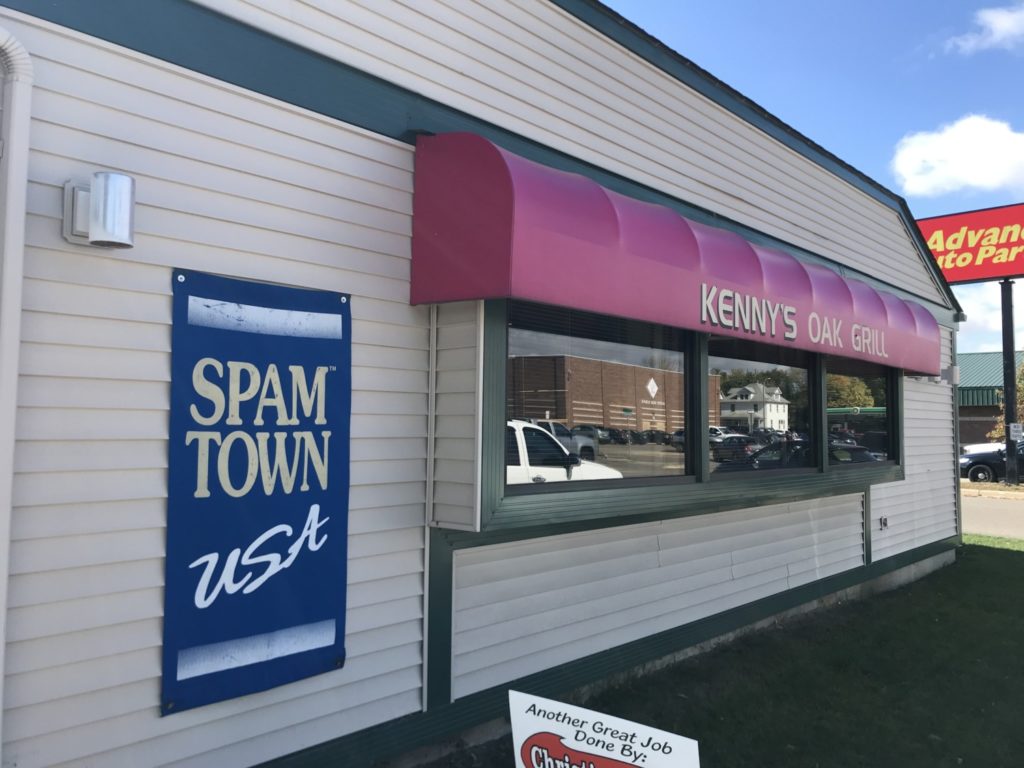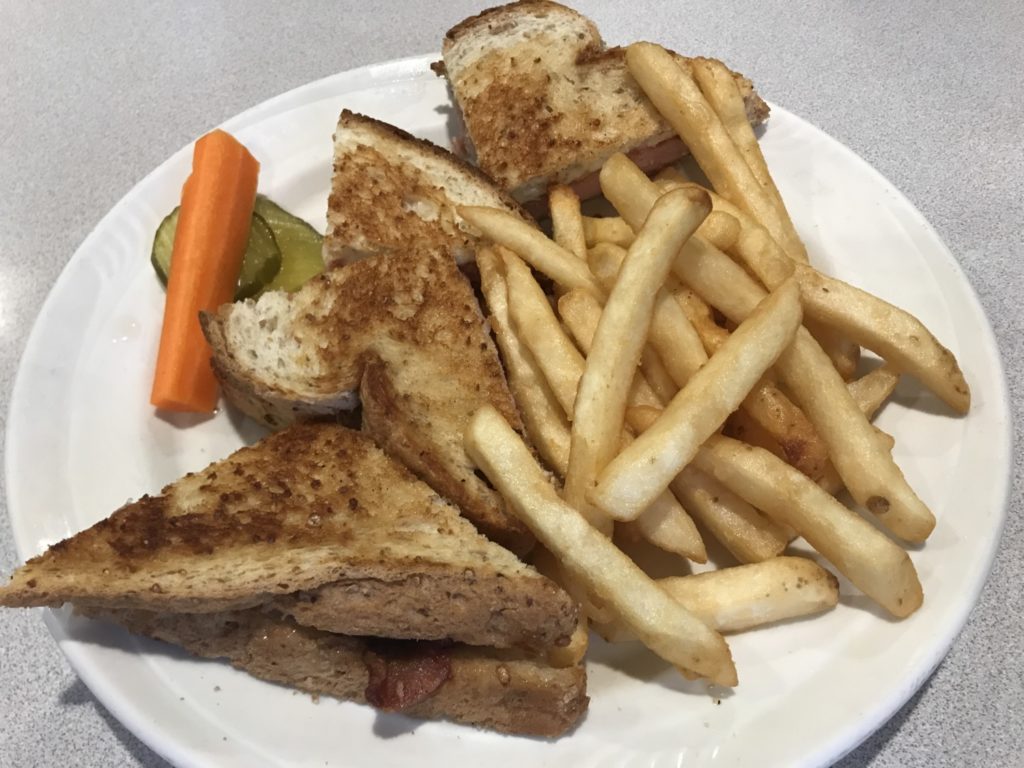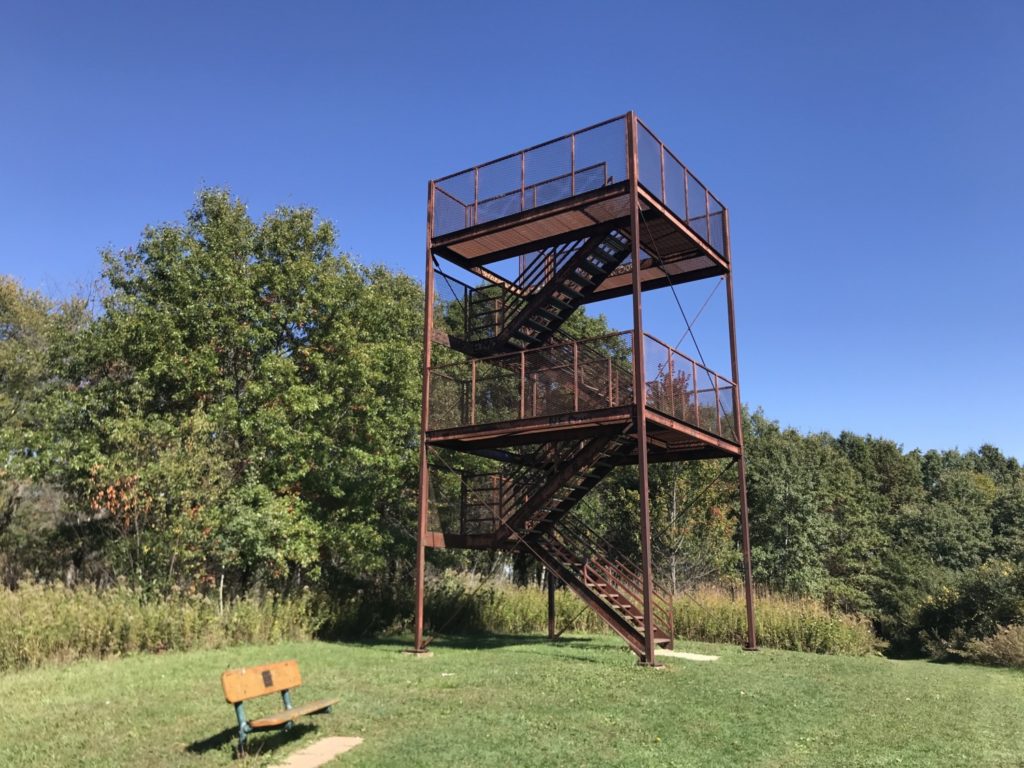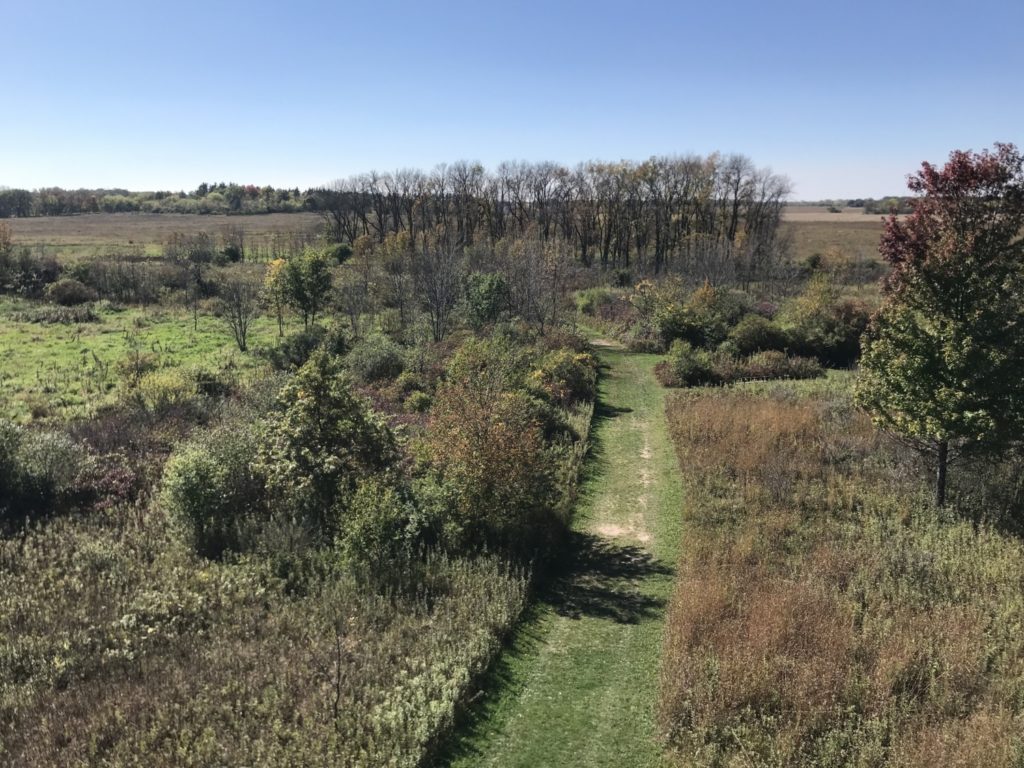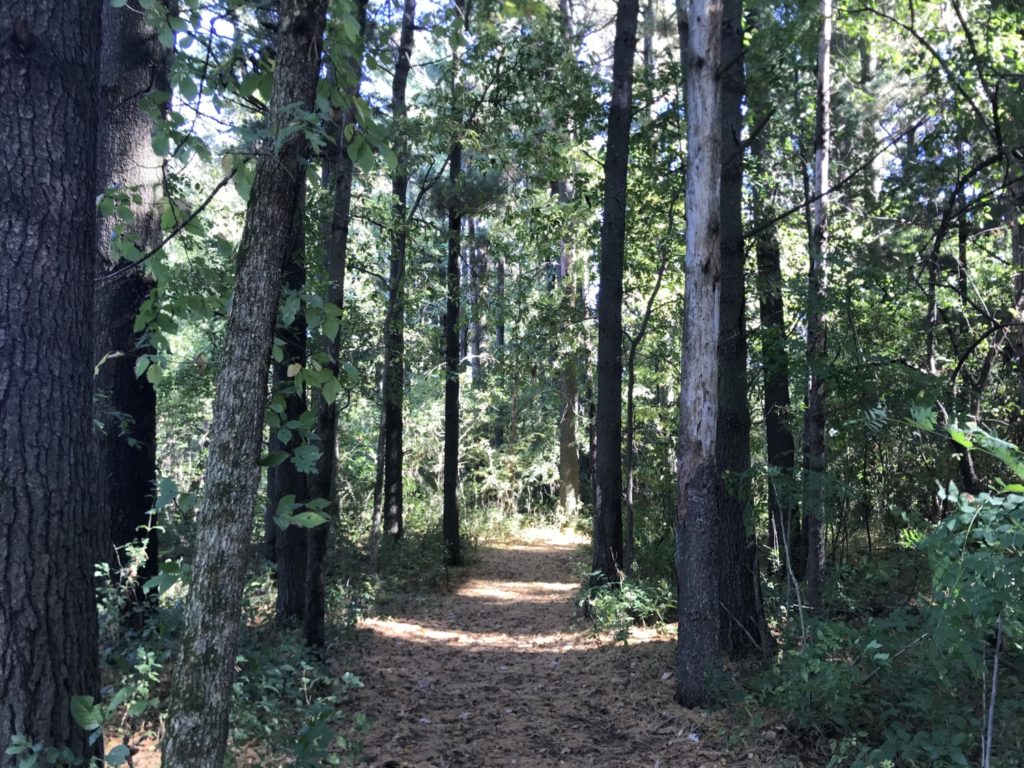On our way back to Ohio, Tom and I spent several days in and around SPAM Town, USA, also known as Austin, Minnesota. We loved Austin, which is a small city of 24,000 people with a quirky sense of humor. Not every city would enjoy being called SPAM Town, but Austin takes pride in the appellation.
The primary reason Austin is called SPAM Town, isn’t because of the volume of junk e-mails they get. Instead, it is the home of the Hormel Foods Corporation, the makers of the famous canned meat. The Hormel Foods Company was founded in 1891 by George Hormel, largely because he loved really good, fresh sausage. In 1926 the company introduced the first canned ham, advertising and selling it nationally.
George’s son, Jay, took over the company in 1929. George retired to California, because he knew he would never let Jay run the company if he remained in Austin. Under Jay’s direction, the Hormel Foods Corporation expanded its canned offerings into soups, stews, chili, and a variety of canned meats. SPAM was introduced in 1937. During World War II, over 15 million cans of meat a week were shipped overseas by the Hormel Company. The most popular and ubiquitous item was SPAM.
In the years since World War II, Hormel Foods Corporation has continued to expand its product line. They now produce hundreds of food items, including Jennie-O products and Skippy peanut butter. Jay Hormel served as Hormel Foods Corporation until 1954, when leadership of the company passed out of family hands. The Hormel family set up a charitable foundation which supports the Hormel Institute at the University of Minnesota and the Hormel Nature Preserve in Austin.
SPAM, in many ways, is the iconic Hormel product. Over 85 billion cans of SPAM have been sold since the product was introduced. Supposedly, the name comes from a combination of “spiced ham.” It was particularly popular during and after World War II. The small can is supposed to contain enough servings to provide meat for a family of five. Obviously 1950 size servings!
Of course Tom and I had to go visit the SPAM Museum in SPAM Town. Located in the lovely and active downtown, the Museum isn’t large but packs a lot of information in a small space. I was missing a timeline of the company, but everything else I wanted to know was in the museum. We saw a display on the beginnings of the company and another on the popularity of SPAM during World War II. Hormel used a lot of different advertising and tried many different products. Some of them succeeded, some didn’t. Ox joints and Pork Tongue are two examples of canned meats that have been abandoned over the years.
SPAM is particularly popular in Asian countries. People in Japan and Korea both eat a lot of SPAM and enjoy it in a variety of recipes. Among people in the United States, Hawaiians eat more SPAM than any other state population. Some people suggest this is because of the number of cans of SPAM that were left there after World War II. Canned meat stays good a long time.
Tom and I especially enjoyed the SPAM Museum gift shop. Tom got a sweatshirt that people admired all over Minnesota when he wore it. Lots of people told us “I’ve been there!” We also got at least one can of every kind of SPAM. It seems the younger generation of our family (and some of the other ages) have never had SPAM. We are planning to change that. There are 11 varieties of SPAM, so you can find one that tastes delicious to you.
After visiting the SPAM Museum, Tom and I had to eat at a restaurant that served SPAM. There are several in Austin, and we picked Kenny’s Oak Grill which was a diner close by. When Tom and I both ordered the “SPAM de Melt” (grilled cheese, SPAM, and bacon on wheat), the waitress asked if we had just been to the SPAM Museum. She said a lot of people want to eat SPAM after they have been to the museum. The sandwiches were delicious and we enjoyed our lunch very much.
After our filling lunch, Tom and I needed to get some exercise, so we headed to the Jay C Hormel Nature Center. Although we were only expecting something like a Metro Park, the Hormel Nature Center has a beautiful building with wonderful displays on the forests and prairies of southeastern Minnesota. The Nature Center also had nine miles of trails spread over 500 acres. We set out intending to make a loop to and from the Observation Tower, taking in forest, prairie, ponds, creeks, and wetlands on the hike. Unfortunately our loop turned into a one-way hike when we ran into a bridge that was closed. The woman who gave us the map didn’t say anything about the bridge being closed. We extended our walk a little and added another mile of back-tracking to the loop.
In addition to seeing these sights in SPAM Town, we also hit the Dairy Queen, did some grocery shopping, and picked up some other items we needed. During our stay in the area we made three separate trips to Austin and enjoyed every one of them. We even found the Shooting Star State Trail which made us wish we had brought our tandem along. Austin is a beautiful place to visit, with friendly and welcoming people. We may stop by there again someday.


